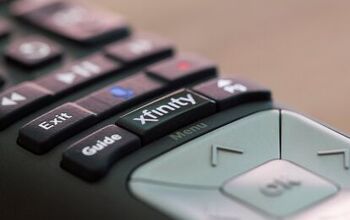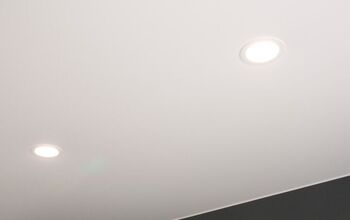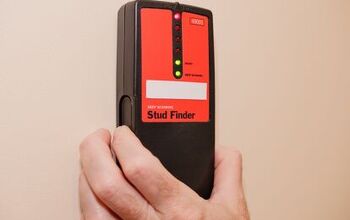LED Pool Light Not Working? (Possible Causes & Fixes)

A swimming pool makes a residential property so much better for a variety of reasons, and one that comes equipped with an LED light is even more ideal. An LED pool light will ensure the pool can be safely used 24 hours a day, and it will also boost the pool’s visual appeal as well.
But when an LED pool light stops working, this can be a real inconvenience. Read this article to know what’s causing your LED pool light to not work.
Poor sealing, a flipped switch, and detachment are what commonly cause an LED pool light to not work. Additionally, there could be a problem with the breaker, the line continuity, or the GFCI. The common causes can usually be addressed by an unskilled homeowner, but the more uncommon ones require an electrician or a pool technician’s assistance.
Do You a Need Pool, Spa, or Hot Tub Contractor?
Get free, zero-commitment quotes from pro contractors near you.

What Is an LED Pool Light?
An LED pool light uses a small semi-conductor, not a bulb, to convert electrical energy into light. An LED light is different than an incandescent bulb, in that the latter creates light when a wire filament is heated. One of the main appeals of LED lights is that a microprocessor can be used to control all aspects of illumination.
All an LED pool light needs to work is a reliable power source. These lights use very little energy when compared to other methods of pool lighting, and they produce almost no heat. Most LED pool lights are built to last a long time, and they’re certainly eco-friendly pool fixtures.
What to Do When Your LED Pool Light Isn’t Working
Since a variety of things could be causing your pool’s LED light to malfunction, it’s best to distinguish easy troubleshooting from more difficult troubleshooting. Pursue the easy troubleshooting method described below before attempting to do the more difficult troubleshooting.
Easy Troubleshooting
First, strap on some swimming goggles and then dive in to closely examine your pool’s LED light. Attempt to shake the ring which is attached to the light, as this holds the light fixture in place. If it moves easily when you touch it or move water over it, resurface and then come back with a large Phillips-head screwdriver so you can tighten things up.
If this doesn’t resolve the problem, look inside your light fixture to see if there’s any water inside. If there is, this could be from a break in the light’s lens gasket, which is a rubber seal that separates the lens from the housing. The conduit seal wearing out could also explain why there’s water inside the light.
If either seal is causing the problem, unfortunately fully draining your pool will be required to address it. And should the light still refuse to turn on after all this, it’s quite likely it’s dead and needs to be replaced.
More Difficult Troubleshooting
The light’s seals are fine and everything else seems to be right, so what could be causing the problem? Perhaps you tripped a circuit breaker. This can happen when a new appliance is plugged into the same source that’s powering the pool light.
To correct this problem, visit the exterior side of your house, as this is likely where the circuit breaker panel is. If the breaker that your pool light is on has been tripped, unplug whatever you just plugged in and then reset the breaker. This can be done by turning the breaker all the way off and then back on again.
If this doesn’t work, you may have a bad breaker. If this is the case, you should call a professional electrician to come out and replace it.
What Else Can Cause a Pool LED Light to Stop Working?
It’s true that poor seals, tripped circuits, and unsecured components often cause LED pool lights to malfunction, but other uncommon things may cause a light to stop working as well. These uncommon culprits are explained in detail below.
Bad Breaker
A bad breaker could be causing the problem, so you’ll have to check the breaker. This isn’t hard, as all you’ll have to do is connect a couple probes with terminals. What’s more difficult is getting a multimeter, as this is needed to complete the task. A basic one can be purchased at any hardware store, or you could borrow one from a neighbor.
To test the breaker, you must first remove the front panel of the breaker box, as this will allow you access to the terminals. Before you remove the panel, indicate which switch is linked to the pool light.
Running a Multimeter
A standard multimeter has two leads: one red lead (positive) and one black lead (negative or ground). The black lead is connected to COM port while the red lead is connected to the mAVΩ port. The latter lead will be connected to the “hot” wire to measure volt load.
To begin, set the multimeter to read 120 Volt AC or higher so it can accurately read your breaker. Next, touch the red lead to the single-pull terminal and then the black lead to the neutral-base row. Usually, the neutral row is labeled, but if it isn’t look for the terminal row with white wires.
Line Continuity
Some pool lights employ up to 200 feet of wiring, and often with wiring of this length a malfunction occurring is just a matter of time. Checking line continuity is done to find the source of a fault in a circuit, and one can use the multimeter discussed above to check line continuity.
To ensure proper readings, set the multimeter to read for 120 or a 12-volt range. Next, measure the line voltage at the junction box. The junction box is where numerous electrical device cables are joined to one mainline. (Keep in mind that not all applications utilize a junction.)
If the junction reads 0, this is an indication that the mainline leading to the box is broken. Get an electrician out to inspect the problem, as it’s likely a new mainline will have to be installed, one which connects the box to the breaker.
Alternative Method: Remove the fixture from the niche, and then remove the bulb from the fixture. Next, connect the multimeter leads to the fixture socket to get a reading. If the meter reads 0 from the socket, this means the fixture is dead and it needs to be completely replaced.
Tripping the GFCI
A ground fault circuit interrupter (GFCI) is a safety device, one that comes with most electronic installations that present a higher-than-average risk of electric shock. GFCIs are often used in bathroom electrical sockets, but the basic idea is that a GFCI should be used anytime machinery could come into contact with water.
A GFCI monitors a circuit’s current, looking to find an irregularity that could be a symptom of a shock hazard. A current change as low as 4 milliamps can activate a GFCI circuit.
Interrupter switches are an absolute necessity at home, as they ensure safety. The only downside is that circuit sensitivity can cause a problem—literally. You see, a phenomenon known as nuisance tripping can occur, and this is when a GFCI trips because it mistakenly reads a current change as a potential shock hazard.
The Benefits and Downsides of Pool LED Lights
Installing LED pool lights has its benefits and downsides. Here are some of the most significant of both.
Pro: Pool Lights Are Eco-Friendly
Upfront, LED lights are more expensive than halogen or incandescent lights, but you’ll save in the long run with LEDs because they are energy-efficient. Incandescent lights typically run on 300 to 500 watts, whereas LEDs use as little as 42 watts. So installing LED pool lights saves you money and saves the environment as well—talk about a win-win!
Pro: Visual Effects
LED lights come in a variety of colors, which means you’ll always have the right color to go with the mood. Furthermore, highlighting features in your pool can be achieved with good-quality lighting, especially deep-glow LED lights. And since these lights can be adjusted at the touch of a button, spectacular visuals don’t come at the cost of convenience.
Con: Cost
Beyond the higher upfront cost of LED pool lights, there’s also the cost of specific transformers and converters that are required. With additional electronic equipment comes an increase in the overall cost, and fortunately, these transformers aren’t too expensive and generally reliable.
Related Questions
Since LED pool lights aren’t that uncommon, many individuals have questions about these. Here, a couple frequently-asked questions are answered.
Can a faulty pool light electrocute someone?When pool lights have bonded or grounded incorrectly, electricity can be sent directly through the water, shocking whoever and whatever is in the pool. In fact, a faulty pool light can send electrical currents through the water even when it’s not on.
Is an LED pool light worth it?LED pool light owners certainly love them, but that doesn’t mean these lights are for everyone. If you care about the visual appeal of your pool, you want to ensure it’s safe around the clock, and you don’t care about the cost, then yes—pool lights are worth it!
Do You a Need Pool, Spa, or Hot Tub Contractor?
Get free, zero-commitment quotes from pro contractors near you.

Final Note
In the end, several things could be causing an LED pool light to malfunction. Improper sealing, detachment, and a tripped circuit are common causes, whereas a bad breaker, a tripped GFCI, and a fault in the line continuity are uncommon causes.
If your pool light is experiencing problems and you can’t immediately address them, it’s best to let an experienced electrician or pool technician help.
Related Guide

Matt loves everything DIY. He has been learning and practicing different trades since he was a kid, and he's often the first one called when a friend or family member needs a helping hand at home. Matt loves to work with wood and stone, and landscaping is by far his most favorite pastime.
More by Matthew Mountain



























